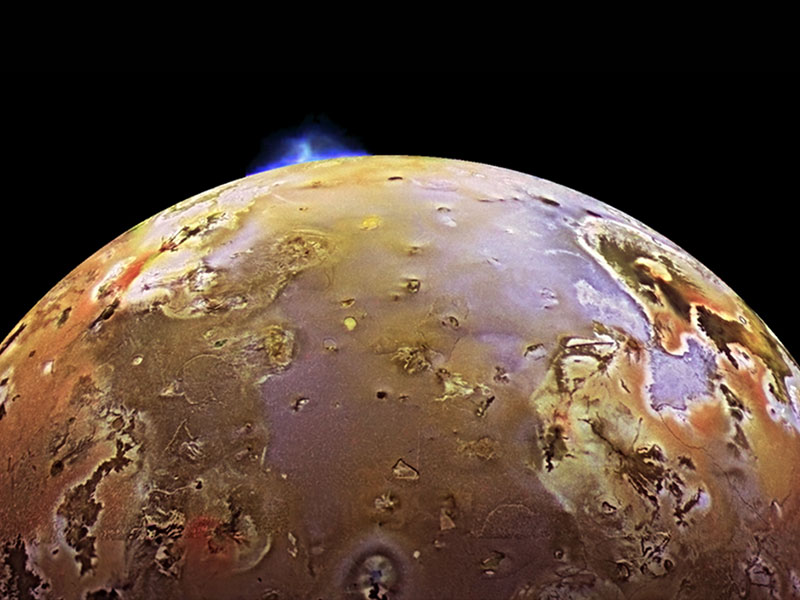
Volcanic worlds are common in our solar system. There’s Earth, of course, but also the moon, Mars, Venus and Jupiter’s moon Io, for example. All of them either are or have been volcanically active. But what about planets and moons in other solar systems? Astronomers have discovered thousands of exoplanets so far, so how many of them – the rocky ones that is – might be volcanic? Indeed, some might even be true lava worlds, covered by molten magma. On September 27, 2022, researchers at Cornell University said they synthesized different kinds of lava in the laboratory that might be found on such exotic faraway worlds.
The researchers published their peer-reviewed results in the November 2022 issue of the Monthly Notices of the Royal Astronomical Society.
Creating alien lava worlds
The researchers wanted to know what types of lava might exist on distant rocky exoplanets. With this in mind, they modeled 16 kinds of rock compositions that are likely to exist on these worlds. Those compositions serve as a catalog for helping to identify planets (or even eventually moons) that might be volcanically active. As the paper stated:
The spectral features of the surfaces of rocky exoplanets give insights into their evolution and inner workings. However, no data base exists yet that contains spectral reflectivity and emission of a wide range of potential volcanic exoplanet surface materials. Here, we first synthesized 16 possible exoplanet surfaces, spanning a wide range of chemical compositions based on potential mantle material of volcanic exoplanets guided by the metallicity of different host stars.
Lead author Esteban Gazel of Cornell commented:
We have synthesized compositions that are representative of possible exoplanet surfaces that combine star metallicity data, thermodynamic modeling, and laboratory experiments.
NASA’s Webb telescope will be able to find these kinds of planets. Co-author Lisa Kaltenegger at Cornell added:
The new observations of lava worlds by Webb are unlocking the secrets to what kind of places are on our cosmic shore. Our catalog of volcanic exoplanet surfaces provides a tool to decipher what composes these worlds.
Clues to planetary evolution
One of the researchers’ primary objectives is to find new clues about planetary evolution. This is where the catalog comes in. Gazel and his colleagues are using previous models of known planetary compositions. These data are a guide for the new planetary surface models being developed relating to volcanism. Another member of the research group, Marc-Antoine Fortin, said:
As Earth and planetary scientists, we are looking for clues to early planetary evolution. Here on Earth, we have some natural relics – very old rocks – that offer us an idea about our own planet billions of years ago. These lava worlds are like a time machine, because Earth was once lava, too. But with exoplanets, at least for those planets filled with magma, we can see planets in different stages of their evolution.
These models are important, especially since we won’t be able to go to these distant planets any time soon. Fortin added:
We’re looking at exoplanets in other cosmic neighborhoods, learning everything we can about these distant planets that, at least in our lifetimes, we won’t be able to visit.
Characterizing alien lava worlds with Webb
As Gazel noted, this is a unique time to be able to study exoplanets. The new Webb telescope will play a huge part in being able to characterize them better than ever before:
Our early catalog becomes an important tool to understand the chemical composition of volcanic exoplanets that are not described best by solar system analogs.
As the paper also stated:
This database is a tool to aid in the interpretation of future spectra of volcanic and lava worlds that will be collected by the James Webb Space Telescope and other missions.

Assembling the catalog
So, how did Gazel and his colleagues put the new catalog together? They focused on the composition of the mantles of the potential rocky planets. The composition would vary depending on the types of stars that the planets orbit. This is because different kinds of stars also gave different compositions. The researchers wanted to know what the melting point would be for these different compositions. To do that, they used thermodynamic modeling. Thermodynamic models are used to predict chemical and physical equilibrium, a state of rest or balance due to the equal action of opposing forces.
Knowing the melting points, the researchers created synthetic lava in the laboratory. This lava matched the various compositions of the planets’ rocky mantles. By cooling the artificial lava afterward, the team replicated the possible surfaces of these planets.
Then, by measuring the infrared reflection spectrum, they linked chemical compositions to the Christiansen feature or Christiansen effect. This is a peak in the spectrum found at nearly 8 micrometers that correlates with silica content and other major chemical components. This provides clues as to the composition of these volcanic worlds. The Christiansen feature has also been used to study space weathering on the moon.
In addition, this can also help scientists better understand how our own rocky planet formed and evolved. Fortin said:
We are trying to understand not just exoplanets, but all rocky planets, including our own.
Bottom line: Scientists at Cornell University are creating alien lava worlds in the lab. They are replicating the surfaces of rocky exoplanets that are volcanically active.











